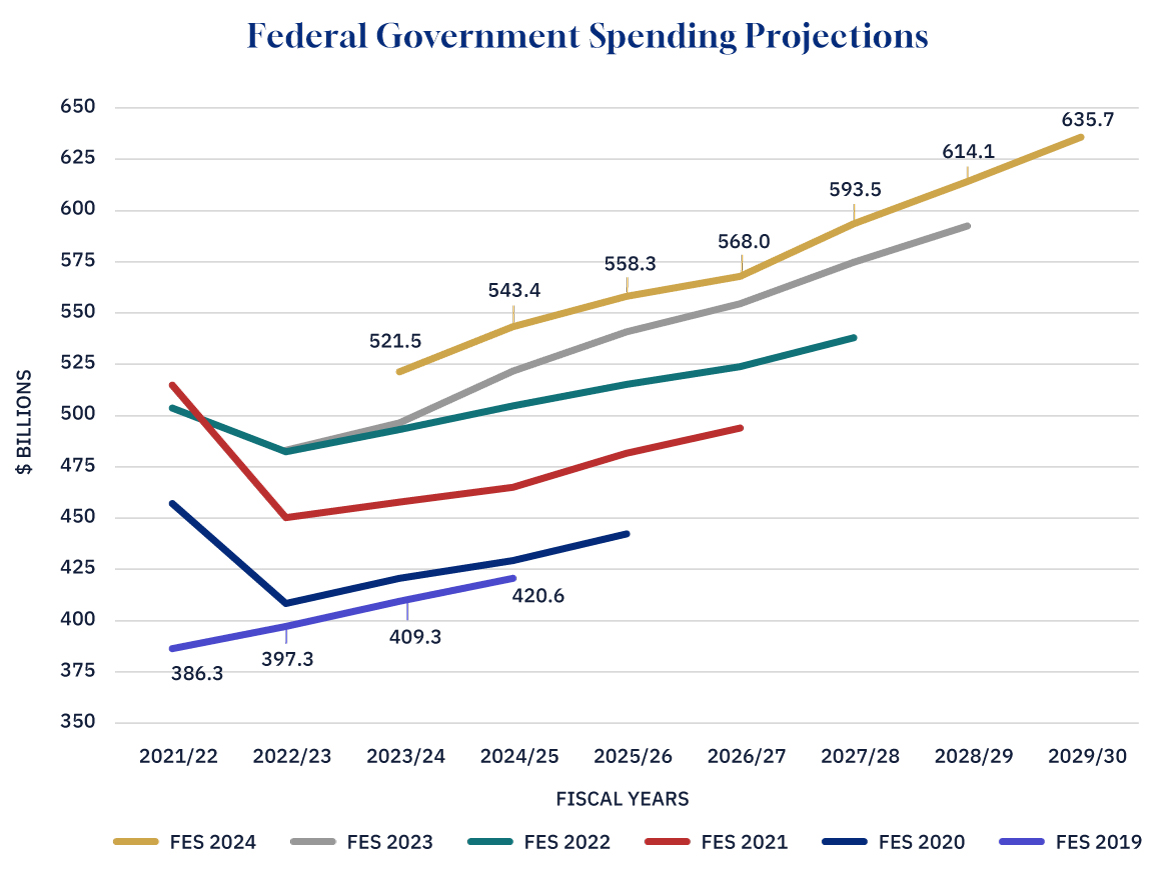Published in The Hub.
The resignation of former finance minister Chrystia Freeland hours before the federal government delivered its 2024 Fall Economic Statement overshadowed the statement itself. But her resignation and the numbers in the statement are variations on the same message: the federal government is not, and for years has not been, remotely serious about fiscal management.
The trajectory of spending projections in each successive fall statement since 2019 tells an astonishing story of fiscal recklessness. The fall statement for 2019—the last projections before COVID—put spending for 2024/25, the year we are now in, at $421 billion. By the time of the 2020 fall statement, after adding back pension costs that the government had omitted from its main presentation, spending for the current year had risen to $429 billion.

That was just the beginning. The 2021 fall statement projected $465 billion for 2024/25. The 2022 fall statement projected $505 billion. The 2023 statement projected $522 billion. Now, the government tells us that spending in the current fiscal year will be $543 billion. In five years, the projections for 2024/25 rose by $123 billion.
And we may not be done. The spring budget said spending in the 2023/24 fiscal year—which was already over when the government tabled the budget—would be $505 billion. Now the fall statement tells us it was $522 billion. Who would be so naïve as to think the government’s latest numbers for 2024/25 are any more reliable?
The federal government’s unserious approach to public money has left Canadians carrying too much debt and paying too much tax. Steering a prudent fiscal course that supports growth and rising living standards is a serious task. Canadians need a federal government that takes fiscal policy seriously.
William B.P. Robson is President and CEO of the C.D. Howe Institute.





